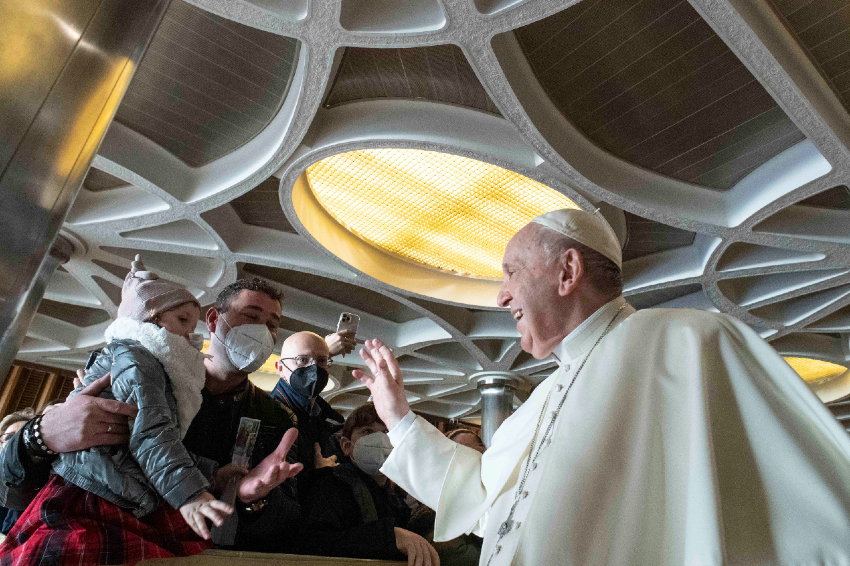Letter #25, 2022, Thursday, February 3: Speculation
The Italian Vatican journalist Sandro Magister, an old friend who has covered Vatican affairs for decades, has just come out with an interesting piece which offers some insight into possible scenarios for the election of the next Pope.
The article deals with three issues: 1) The ecumenical monastery in northern Italy called Bose, where conflicts have arisen between the old abbot and Pope Francis; 2) the Knights of Malta which once were regarded of one of the great institutions of the Catholic Church but recently has fallen on hard times with divisions arising over its mission and identity; 3) they community of Sant’Egidio and its head, Andrea Riccardi, from whom Magister speculates (based on a number of recent signs that he sees) the next Pope may come. The interesting thing in this analysis is that this next possible Pope — Magister suggests it may be Cardinal Matteo Zuppi, 66, the current archbishop of Bologna in central Italy — may be in some way so much under the influence of Riccardi that even though Zuppi may be elected Pope, it will be Riccardi (Magister suggests) who will be the true power behind the throne. Therefore it might be interesting to get to know a bit more about Riccardi at this link.
I propose this article to you because, alongside all of the coverage of the pandemic, the lockdowns, the plans for a “global reset,” it seems fitting to take a quick look at some of the things happening in Italy around and inside the Vatican, which may affect the leadership of the Church in years to come. —RM
P.S. We will be sharing soon the very interesting videos from our January ITV Writer’s Chat with Dr. Peter Kwasnieski. We would like to invite you to join us on Friday, February 18 at 1:00 p.m. Eastern for our next ITV Writer’s Chat with Dr. Gavin Ashenden. Click here to register and join us.
P.P.S. As usual, we draw your attention to this link, also in the red banner below, which will send you to a page where you can make a small contribution to this letter, which would be greatly appreciated.
Survey of Bergoglio’s Favorites and Reprobates. With One Successor in the Running, or Rather Two (link)
By Sandro Magister
February 3, 2022
Checking is simple. It is enough to fill the rows of a table with the measures Pope Francis has taken with the Community of Sant’Egidio, the monastery of Bose, and the Knights of Malta to see how contradictory are his criteria of governance, how fickle his sympathies, and how indecipherable his judgments.
With Sant’Egidio the idyll of the pope is in perennial bloom, with Bose founder Enzo Bianchi the love of the past has been turned to aversion, with the Knights of Malta it’s back and forth between open arms and cold shoulder. Without Francis ever giving a reason for any of this.
*
With the Knights of Malta there is an all too eloquent proof of Francis’s erratic conduct in the series of cardinals to whom he has entrusted the care of the Order. With cardinal patron Raymond L. Burke, appointed to this role in 2014 after his removal, expert canonist though he is, as prefect of the Supreme Tribunal of the Apostolic Signatura, in 2017 the pope put over him as special delegate Giovanni Angelo Becciu, who in 2020 was sensationally dismissed from all his offices and even from the “rights” of the cardinalate and replaced at the Order of Malta with Cardinal Silvano Tomasi. All this without any justification from Francis for the fall into disgrace of the first two, the second of whom was condemned “a priori” by the pope months before the start of the trial against him at the Vatican, even now stuck at the starting blocks on account of repeated objections over its legal propriety and its dodgy developments.
Not only that. While at first the pope had peremptorily forced into resignation the Grand Master at the time, the Englishman Matthew Festing, a staunch defender together with Cardinal Burke of the spiritual profile and doctrinal fidelity of the Order, and had taken the side of the internal opponents led by the Grand Chancellor, the German Albrecht Freiherr von Boeselager, of more “secular” tendencies, today the roles have been reversed, and it is Francis, making all the decisions himself and imposing obedience on all, who is pushing to strengthen the religious aspect of the Order and its subordination to the Holy See, against Boeselager and his followers who instead are claiming room for secularism and autonomy. Here too without the pope ever explaining the reason for his reversal of course, receiving in audience now one and then the other of the contenders and each time showing that he agrees to the interlocutor of the day.
*
Regarding the founder of the monastery of Bose, the falling out of love between him and Pope Francis was no less astonishing, and it too has gone without explanation.
In 2019 Francesco had appointed Enzo Bianchi as consultor to the pontifical council for Christian unity. But this was only the sign of a long-standing solidarity between the two, cemented by the formidable network of relationships that the founder of Bose maintained with cardinals and bishops among those most appreciated by Jorge Mario Bergoglio and even more with the heads of Orthodox and Protestant Churches in excellent rapport with the current pope, most notably Constantinople ecumenical patriarch Bartholomew and Anglican communion primate Justin Welby.
Then, suddenly, the lightning bolts from Francis fall on Bianchi, culminating in the decree of May 13 2020 condemning him to “separate” in spirit and body from Bose, signed by the secretary of state Cardinal Pietro Parolin but approved by the pope “in specific form,” therefore definitive and unappealable.
Bianchi does not obey the “diktat” meekly. And his supporters resist too, initially blaming unspecified papal courtiers for plotting the repudiation. But a year later, on June 15, 2021, even the best-known fan of Bianchi and Bergoglio, Church historian and leader of the so-called “school of Bologna” Alberto Melloni, for the first time accuses Francis directly of the rupture.
Today in Bose there is a new prior, Sabino Chialà, elected last January 30 with the approval of the Vatican. But Bianchi has not reconciled himself to the loss of his old love. He continues to write, to give conferences, to cultivate his international and ecumenical network of friendships. And he has bought a large farmhouse about three miles from Bose, in Albiano d’Ivrea, which, when renovated, will house him together with the dozen monks who are staying with him.
*
As for the case of the Community of Sant’Egidio, Settimo Cielo has already furnished the basic outline in this post of last October 12:
> Conclave in Sight, Operation Sant’Egidio
It is no mystery that the Community is aiming to have elected as pope in the future conclave Cardinal Matteo Zuppi, the current archbishop of Bologna and its leading member from the beginning. Just as it does not escape those in the know that the Church’s acting director, if Zuppi were elected pope, would be before and more than him Andrea Riccardi, the all-powerful founder and head of the Community.
This is evidently fine with Francis, given the continuous, loving signs of appreciation that he shows for the Community of Sant’Egidio and its leaders, as opposed to the punitive measures he instead reserves for almost all the other ecclesial movements, more or less distasteful to him.
For example, the 10-year limit on the office of president that he imposed on movement leaders with a decree last June 3 was a trap Francis sprang for the leader of Communion and Liberation, Julian Carrón, who was abruptly forced to leave his post. But the pope is taking care not to apply it to Marco Impagliazzo, who has continuously presided over the Community of Sant’Egidio since 2003, that is, for almost twenty years.
A similar difference in treatment is that which Francis adopts toward the obscure pages of this or that ecclesial movement. With some of these movements, Francis has already acted relentlessly, with investigations, commissioners, and convictions. But not with Sant’Egidio, which he has always spared. Because the history of this community, behind the glowing facade, is also marked by power struggles, by sexual intemperance, by very rigid internal hierarchies, by forced marriages that are therefore annulled, the judicial documentation of which Settimo Cielo has provided, not to mention the careful cover provided for certain high-ranking members of the Community with less than impeccable backgrounds.
The fact is that the Community of Sant’Egidio is a power as never before, all the more thanks to the strokes of luck it has benefited from in recent weeks, featuring none other than its two leading representatives, Zuppi and Riccardi.
The cardinal of Bologna already enjoyed wide international recognition, but on January 14 he had the additional honor of presiding in Rome over the state funeral for the late president of the European parliament David Sassoli, his young fellow student at the “Virgilio” high school of Rome where the first nucleus of Sant’Egidio was formed. Naturally in the presence of the major political leaders of Italy and Europe.
Moreover, Zuppi stands a very good chance of being the next president of the Italian bishops’ conference, whom it is up to Francis to select from among the three bishops who receive the most votes at the upcoming plenary assembly in May. But all the same the pope could appoint someone else, precisely to spare Zuppi the inconvenience of a difficult presidency.
But as if this were not enough, it even fell to Riccardi to appear among the front runners for the presidency of the Italian republic, which in the end saw Sergio Mattarella re-elected on January 29, but with the founder of the Community of Sant’Egidio honored during the days of the election, by leading leftist party secretary Enrico Letta, with nothing less than the title of “our ideal profile of a president,” whom “we have had the honor of presenting to the country” as a “beautiful personality, one of the best personalities of our time.”
While the rise to the presidential (and once pontifical) palace of the Quirinale has slipped away, the Community of Sant’Egidio has undiminished or even improved chances of acceding to the chair of Peter. It is thought that Zuppi and Riccardi want to continue the journey begun by Francis in a more orderly form and without the character imbalances that damage the current pontificate. But it may be that this very continuity between them and Bergoglio, given the growing and widespread dissatisfaction over how the Church is governed today, could topple their fortunes at the conclave.








Facebook Comments